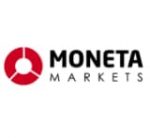
There are many uninformed traders and investors that do not understand the potential for significant gains when trading foreign exchange currency pairs. They incorrectly assume that daily movements of one percentage point or higher could never match the profits from trading shares in the stock market. They do know what margin is, but they are not quite sure what the use of leverage entails.
Leverage in the forex market is like stock market margin to a degree, but a forex broker allows far greater than a “2:1” margin, as with stocks, and charges no fees for the privilege of using it. If you employ “50:1” leverage for your chosen currency pair and it moves 2% in your favour, your return equates to 100% on invested capital on a single trade. Caution is advised, however, since leverage can also magnify your losses without prudent risk management controls in place.
In this article, you will learn what leverage is, how it can both be a benefit as well as a curse when using it, and how to determine what is the prudent amount of leverage to employ in your daily trading regimen. There will be offshore brokers in unregulated jurisdictions that offer levels of leverage as high as “500:1” and higher, but many of these brokers are not considered safe. If you only want to trade with a safe forex broker, we have canvassed the industry and assembled a list of the best forex brokers for your review, based on our assessments of the industry.
What is Leverage?
Leverage in forex trading is basically the choice to use funds provided by your broker to enlarge your position in the market. Your broker, based upon regulatory guidelines, may limit the amount of leverage that is available for you, but the amount allowable and any amount lower, clear down to zero, is your personal choice. There may be other factors like your status as a trader. Are you a professional trader or a retail trader? Regulators allow the former more latitude since they trade for a living and are well-informed as to how to use leverage.
A simple example will drive home the major benefit of leverage. Let’s assume that you wish to trade $1,000 and employ “50:1” leverage. Your position in the market will actually be $50,000, obtained by multiplying these two figures. A 1% move in your favour will deliver a profit of $500, excluding the impact of trading fees and spreads. Your return on capital for that single trade would then equate to 50%, a significant gain based on anyone’s measure of profitability.
What if the forex market moved against you? The same calculations apply, except in the opposite direction. You would have incurred a loss of $500 and wiped out half of your $1,000 position. For this reason alone, the counsel for beginners is to start low with the use of leverage. Practice on a demo system until you are comfortable with using leverage. When you move to the real market, start low again and work your way up to a level that does not cause excessive anxiety.
How is a forex broker able to offer leverage for free? For the broker’s side of the equation, the amounts collected for spreads and commissions are also amplified. This revenue covers the broker’s cost of funds, as does managing the backroom on a net-risk exposure basis. Part of that risk management process also requires that a specified level of unused funds remain in your account to permit your leveraged position in the market.
In the example above, you may be required to have a margin rate of 2% of un-invested funds available, i.e., 2% of $50,000 exposure or $1,000. There may also be specific levels of margin exposure, established by regulators, where your trade will be automatically closed in order to protect you, as well as the broker, from substantial losses. Before you reach this automated closing, you might receive the dreaded “margin call” from your broker, ordering you to close your position. There are also risk management techniques for determining the size of your position, which will be discussed later in this article.
It is important to remember at all times that leverage can be a good, as well as, a bad thing, a double-edged sword, so to speak. It can magnify gains, but it can also amplify losses. High-leverage forex trading is never prudent unless you also limit your risk exposure and feel comfortable with its use. Veterans have learned how to use leverage in such a way that they may have many small gains and losses over a month, but also a few large gains, where leverage has increased the benefit of their trading strategy.
The Benefits of Trading with High Leverage
Leverage is what makes trading currencies a lucrative activity, as long as you protect yourself from downside risk. The major benefit is that you can maximize your potential trading gains and minimize your trading losses by using prudent risk management techniques.
If we return to our “50:1” leverage example from above, you would need to start with an account of at least $2,000 to place that trade in line with your broker’s requirements. For several reasons to be discussed later, you would want a buffer to prevent an unwanted margin call. For this example, an account balance of from $4,000 to $5,000 would work best.
There is also a secondary leverage benefit. There are a multitude of factors that can influence the price direction of your chosen currency pair. The result is that prices may exhibit low volatility for extended periods of time before reacting violently to new economic announcements or news events of a global or local nature. Leverage provides the means for making acceptable profits during these low periods of volatility.
The Drawbacks of High Leverage
High leverage forex trades can be very profitable and produce high rates of return on invested capital, but, without the proper risk protections, leverage can maximize losses and cause irreparable harm. Regulators in major jurisdictions have focused in recent years on this very beneficial aspect of forex trading by curbing its use, an attempt to protect beginners from becoming an early casualty in this environment.
Leverage levels as low as “30:1” to “50:1” may now apply to trades of major forex currency pairs, whereas even lower limits may apply to minor pairs. Leverage may even be blocked for cryptocurrencies or be as low as “2:1”. Unfortunately, these leverage limitations have caused many traders to succumb to the marketing tactics of unsafe brokers in foreign jurisdictions that freely offer leverage upwards of “500:1” and beyond.
A wise trader will resist these temptations and live within these new curbs. Having an account balance that allows for liberal leverage usage will also prevent another drawback from occurring. If your market exposure is too close to your broker’s margin limits, such that your position is automatically closed, you may miss out on the major run-up in prices that might ensue afterwards. Large institutional traders will often drive prices down significantly before a sizable upward trend.
Who Should Use High Leverage Amounts?
What is the proper level of leverage to employ in your forex trades? By regulatory edict, high leverage amounts in major jurisdictions can only be used by professional, institutional traders. For retail traders, the level you may use is limited, but within those guidelines, your personality will be a better gauge of what level is suitable for you.
Conservative traders will opt for lower usage levels, while aggressive traders tend to prefer the upper limits offered by their brokers. If we focus on our example from above with “50:1” leverage, what would be the correct position sizing using risk management rules? A general rule of thumb is that your risk in a trade should not exceed 3% of your account balance.
How do we apply this rule? If we have a $5,000 account balance, then 3% equals $150. For the hypothetical position of $50,000 in the forex market, $150 of loss potential equates to 30 pips of negative price movement. Our $1,000 of invested capital would then fall within our risk parameters, as long as we inserted a Stop-Loss order at 30 pips below our entry point.
Related Articles
- Can I Trade Forex Without Leverage?
- A Guide to Risk Management for Forex Trading
- Risk Management Strategies for Forex Trading
Safe Forex Brokers
If you are searching for a broker that offers leverage levels in excess of local restrictions, then you are more than likely considering an offshore broker where risk attributes will not be in your favour. It is always best to trade with a safe, secure broker with an admirable reputation and track record for service and client satisfaction. We have assembled the following list of the safest forex brokers for your consideration, based on our current reviews of the brokerage community:
– Regulated by FCA, FSCA, CMA and FSC – 40% New Member Bonus – Flexible leverage up to 500:1 – CySEC, FCA, FSCA, SCB Regulated
Broker
Features Min Deposit EURUSD Spread
![]()
 Your capital is at risk
US Clients: No Regulated : Yes
Your capital is at risk
US Clients: No Regulated : Yes
– Over 1M Registered Accounts
– More than 250 Trading Instruments
– MT4, MT5 and Web Trader Platforms
– No dealing desk
– Crypto-trading only avail. for Exinity Limited.$200 ECN 0.1, Standard 1.6
 Your capital is at risk
US Clients: No Regulated : Yes
Your capital is at risk
US Clients: No Regulated : Yes
– MIFID, ASIC, FSA & FSCA regulated
– Free Online Trading Coach$100 Fixed
 Between 74-89 % of retail investor accounts lose money when trading CFDs
US Clients: No Regulated : Yes
Between 74-89 % of retail investor accounts lose money when trading CFDs
US Clients: No Regulated : Yes
$200 NDD 0.09 / Standard 0.69
 * 82% of retail investor accounts lose money when trading CFDs with this provider. You should consider whether you can afford to take the high risk of losing your money
US Clients: No Regulated : Yes
* 82% of retail investor accounts lose money when trading CFDs with this provider. You should consider whether you can afford to take the high risk of losing your money
US Clients: No Regulated : Yes
100GBP/AUD/EUR/USD variable
 Your capital is at risk
US Clients: No Regulated : Yes
Your capital is at risk
US Clients: No Regulated : Yes
– Multi award-winning New Zealand broker
– Institutional-grade spreads from 0.1 pips$200 From 0.1
 Your capital is at risk
US Clients: No Regulated : Yes
Your capital is at risk
US Clients: No Regulated : Yes
$50 0.02
 61% of retail CFD accounts lose money
US Clients: No Regulated : Yes
61% of retail CFD accounts lose money
US Clients: No Regulated : Yes
$50 (varying by Country) from 1
 Your capital is at risk
US Clients: No Regulated : Yes
Your capital is at risk
US Clients: No Regulated : Yes
$5 From 0.0 pips
 Your capital is at risk
US Clients: No Regulated : Yes
Your capital is at risk
US Clients: No Regulated : Yes
– MetaTrader4 , MetaTrader5, cTrader, FxPro SuperTrader
– 15+ Years in business
– 90+ International Awards$100
Using leverage in forex trading can be both a boon as well as a double-edged sword. It can magnify the potential profits for your chosen position, but it can also maximize your losses if you do not also utilize prudent risk management techniques. For beginners, practice on your demo system until you are comfortable with its use. In real-time, start small and work your way up, using risk management tools to protect your downside.